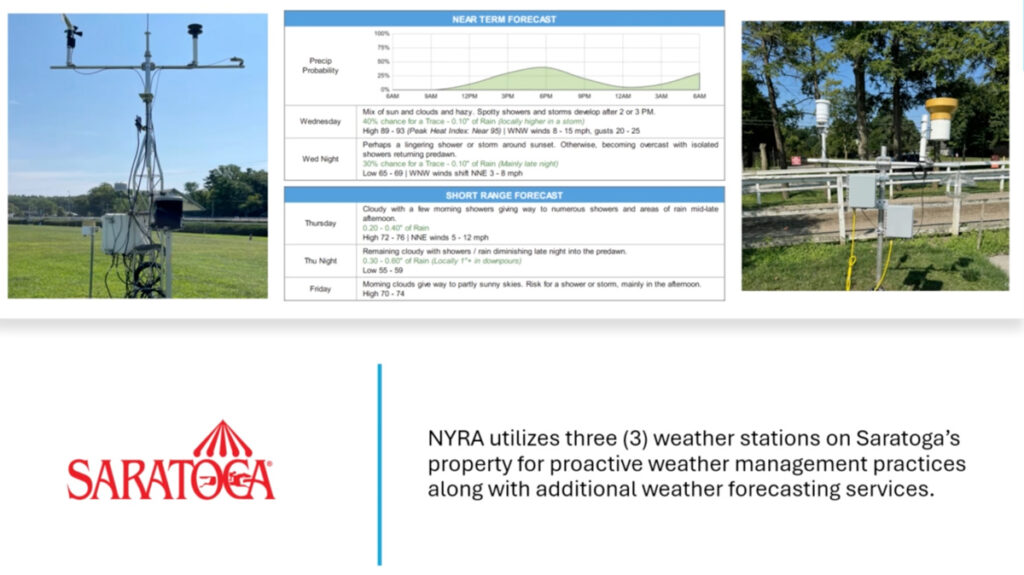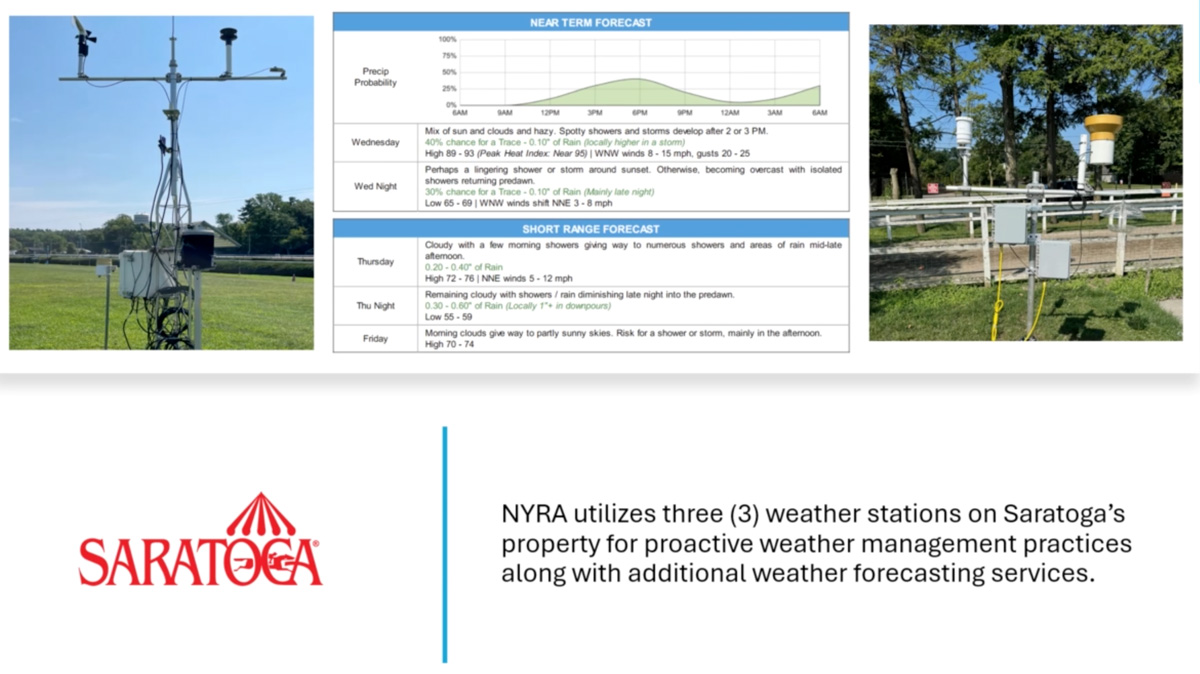
A slide from a presentation delivered by NYRA’s Glen Kozak shows weather stations and forecasts at the Saratoga Race Course. Image via the Jockey Club’s “Weather Wise: How Sports and Racing Are Adapting” panel discussion in Saratoga Springs on July 31.
SARATOGA SPRINGS — On the turf or off the turf? For horse racing fans, the answer to this question can be more important than Hamlet’s existential query, “To be, or not to be?”
A panel discussion held in Saratoga Springs last week helped shed light on how the New York Racing Association (NYRA) monitors weather forecasts, which can decide whether conditions will allow races to be run on or off the turf (or, in more extreme cases, whether races will be run at all).
Glen Kozak, NYRA’s executive vice president of operations and capital projects, said that NYRA collects its own data via three weather stations on the Saratoga Race Course property. These stations capture data pertaining to moisture, temperature, wind speed, and air quality (the last of which has increasingly become an issue due to wildfires in Canada).
Kozak credited Kaleb Dempsey of the Racing Surfaces Testing Laboratory with designing the equipment that provides real-time data that impacts not only decisions related to turf racing but also the track’s scheduling plans in general.
NYRA also utilizes the services of three on-call weather agencies, allowing them to consult with meteorologists whenever necessary.
“Dealing with the weather services, we’re able to get information on how we prepare the track, what we’re doing with the track; and then it’s the discussions with the racing office and the officials on what we would do for the day,” Kozak said.
Weather (pun intended) horse racing fans agree or disagree with NYRA’s decisions to alter or reschedule certain races, it can’t be denied that such decisions are well-substantiated.
Post Views: 8

